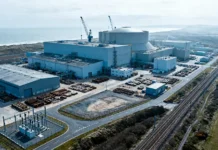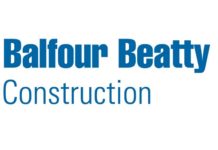America needs $9.1 trillion to bring its infrastructure to good repair over the next decade. Current spending trajectories will deliver $5.4 trillion, leaving a $3.7 trillion gap between what’s needed and what’s planned, according to the American Society of Civil Engineers’ latest assessment.
The Reality of Current Spending
Even after the Infrastructure Investment and Jobs Act’s historic investment, the shortfall persists.
The Congressional Budget Office provides sobering context: all levels of government spent $626 billion on transportation and water infrastructure in 2023, the most recent year for which such data is available. That sounds substantial until you realize much goes to operations and routine maintenance rather than transformative capital projects. The money helps keep systems running but it can be difficult to also address the backlog of aging assets requiring replacement.
In October 2024, the Federal Highway Administration announced $635 million for more than 70 bridges across 19 states—from replacing the earthquake-vulnerable Ghiglione Bridge in Alaska’s Denali National Park to preserving an 85-year-old bridge in Yellowstone that could close within five years without intervention. Maine received $133 million for a dozen Interstate 95 bridges, while a nearly mile-long U.S. 49 bridge over the Mississippi River secured $44 million to extend its life while officials plan a replacement. Yet these targeted investments barely dent the problem: about 42,000 U.S. bridges remain in poor condition, with the American Road & Transportation Builders Association estimating $400 billion would be needed to address all bridge repairs nationwide.
School infrastructure faces particularly acute challenges. The U.S. Department of Energy estimates that addressing deferred maintenance in public schools would require more than $270 billion for repairs to leaky roofs, broken plumbing, and outdated electrical systems. Recent analysis shows 42% of local bond measures were defeated, resulting in approximately $31 billion in funding not secured for school projects.
The funding shortfall has prompted alternative approaches, with firms including American Infrastructure Partners developing school improvement programs that bundle facility upgrades with long-term maintenance commitments.
“The government is never going to be able to raise the money it needs to in order to improve every school,” Bob Hellman, CEO of American Infrastructure Partners, wrote in a recent op-ed. “Additionally, its typically slow pace of action means that, to effectively support today’s students, we require quick investment and swift implementation.” His assessment applies equally to bridges, water systems, and other critical infrastructure where federal programs, while substantial, can’t match the scale of need.
This reality has prompted increased interest in public-private partnerships as procurement and financing tools that can accelerate specific projects. The idea is that, when structured properly, these projects tie long-term maintenance to performance standards, align construction and lifecycle risks, and help deliver on predictable schedules.
Where Private Investment Focuses
American Infrastructure Partners has positioned itself across sectors where federal programs face the steepest challenges. The firm’s transportation platform emphasizes bridge rehabilitation, its education platform improves existing facilities, and its logistics operation owns U.S. Post Office properties across 47 states.
“As private infrastructure investors, those of us in the business need to do more than react to an asset. We need to be reacting to a problem,” Hellman said. “Our industry needs to listen to what a community’s infrastructure problems are.”
The firm’s track record provides concrete examples. United Bridge Partners completed the South Norfolk Jordan Bridge replacement in Virginia for $143 million—30% below the state’s estimate—when the city lacked funds. The Houbolt Road Extension in Illinois reduced CO2 emissions by 240.5 metric tons annually while improving traffic flow.
The Governance Challenge
Research from Brookings and the National Bureau of Economic Research has examined what makes successful public-private partnerships. Public owners must specify service goals, allocate risks deliberately, and verify value for money before signing contracts. Terms need enforceable performance standards and transparent reporting, especially for long-term maintenance obligations.
The Federal Highway Administration’s bridge programs, created by the Infrastructure Act, demonstrate this governance framework in action. The Bridge Formula Program provides predictable funding while the Bridge Investment Program requires benefit-cost analysis and public reporting. Government Accountability Office reviews have strengthened selection processes, creating guardrails relevant when sponsors consider PPP delivery or bundle multiple structures into performance-based contracts.
Strong oversight keeps incentives aligned throughout an asset’s operational life. Brookings stresses that PPPs work best as one option in a larger toolkit rather than universal solutions. The question isn’t whether to use private partnerships but when they offer genuine value compared to traditional delivery.
American Infrastructure Partners, for instance, emphasizes community engagement before project selection, recognizing that successful partnerships require understanding local priorities beyond financial metrics.
“Infrastructure is a local problem. Eighty percent of infrastructure is owned and controlled at the local community level,” says Hellman.
Matching Funding to Need
The $3.7 trillion gap won’t close through any single approach. Federal programs provide essential funding but can’t match the scale of need. State and local governments face their own fiscal constraints. Private partnerships offer one pathway for specific projects where performance-based contracts and lifecycle maintenance obligations create value.
Success requires matching tools to needs. Credit programs like TIFIA and WIFIA work best when paired with grants, local funds, and user revenues. PPP contracts need clear public objectives, measurement protocols, and sustained oversight. Private investors can support this work when contracts keep public interests paramount.































